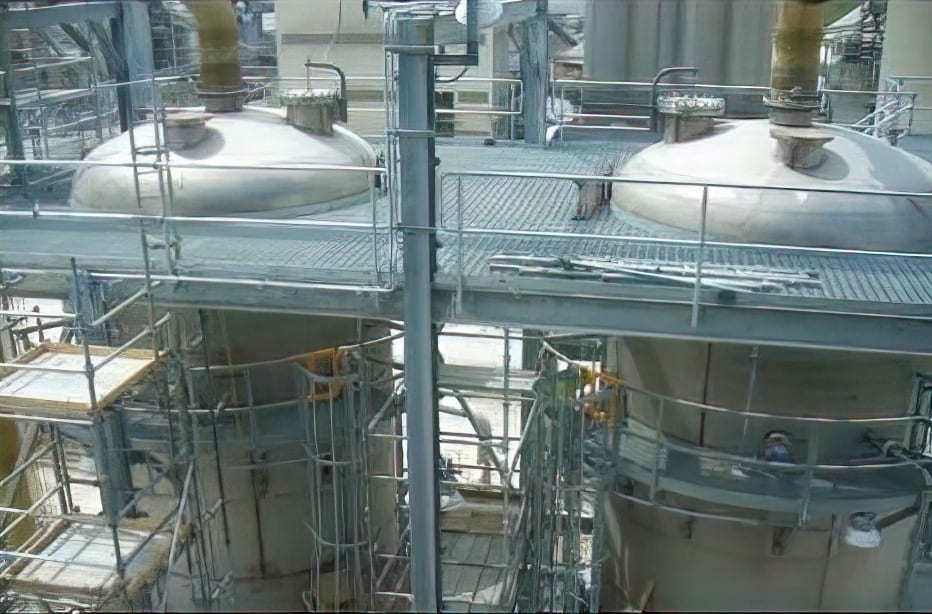Although enhanced oil recovery is the most common use of captured CO2, many different industries have found ways to incorporate CO2 into their production processes. This typically involves using CO2 as a feedstock—reintroducing captured CO2 into the production chain as a raw carbon resource, rather than a post-process emission. The potential uses of CO2 in industry ranges from simple to very complex. Below is a broad overview of contemporary industrial applications.1CO2CRC. (n.d.). What is CCUS? Retrieved 10/24/2020 from https://co2crc.com.au/about-ccus/what-is-ccus
Food and Beverage
One familiar CO2 application is in the food and beverage industry – but there may be more to it than you realize! Carbon dioxide has long been an important chemical in the food industry, valued for its phase properties and chemical inertness. Gaseous CO2 is used to add bubbles to soft drinks, refrigerate food, and deactivate enzymes and microorganisms that can affect food quality during long-term storage. Liquid CO2 is used to produce frozen food as well as extract flavor chemicals and oils from food. Solid CO2 (dry ice) is also a common method of refrigeration and preservation used in the production and shipping of meat, nuts, coffee and more. Even supercritical CO2 (a phase important to carbon storage) has applications as a solvent, most significantly decaffeinating coffee and tea.2Kaliyan, N., Morey, R. V., Wilcke, W. F., Alagusundaram, K., & Gayathri, P. (2007). Applications of carbon dioxide in food and processing industries: current status and future thrusts. In 2007 ASAE Annual Meeting (p. 1). American Society of Agricultural and Biological Engineers.
Solid Carbonates and Bicarbonates
Texas-based company Skyonic has patented a new technology called SkyMine® which allows plants to economically transform exhaust CO2 into stable solids. These carbonates and bicarbonates are safe for landfill storage, but are also useful in a number of industrial chains. Plants can sell the solid waste products to the chemical production industry for use in making products like baking soda, hydrochloric acid and limestone. Additionally, the transformation of gaseous CO2 to solid waste prevents the need for pipeline transportation, which reduces the risk of leaks and re-release into the atmosphere. The Capitol SkyMine® plant opened in 2015 and captures 15% (75,000 t) of the CO2 emissions from the Capitol Aggregates cement plant in San Antonio, Texas. Gases captured from the plant are transformed into materials like baking soda, bleach and hydrochloric acid.3Sodium Carbonate. (2021, June 20). In Wikipedia. https://en.wikipedia.org/wiki/Sodium_carbonate4Eaton. (n.d.). Skyonic Corporation. Retrieved 10/27/2020 from https://www.eaton.com/Eaton/OurCompany/SuccessStories/Energy/SkyonicCorporation/index.htm5Carbonfree Chemicals. (n.d.). Capture harmful pollutants with Skymine. Retrieved November 8, 2020, from https://www.carbonfreechem.com/technologies/skymine

Sodium bicarbonate bubble columns at the Skyonic pilot plant facility using SkyMine® technology.
Soda Ash
Sodium carbonate, or soda ash, has been used for centuries as a washing detergent and to produce glass for bottles and windows. It is also a common agent used to soften drinking water that has naturally hard mineral content, regulate the pH of swimming pools and aquariums, and help bind dye with fabric in the clothing industry.6Carbon Capture Journal. (2016, October 20). Coal power plant in Chennai sells CO2 for soda ash manufacturing. Retrieved 6/22/2021 from http://www.carboncapturejournal.com/news/coal-power-plant-in-chennai-sells-co2-for-soda-ash-manufacturing/3818.aspx
Ethanol
U.S.-based carbon capture firm LanzaTech is using industrial offgases to create green fuels like ethanol. LanzaTech has developed a microbial fermentation process that produces ethanol from exhaust gases like CO2. As the bacteria eats the emissions it essentially ferments them—think of making beer—and emits ethanol.7Swayana (n.d.). Flagship project. Retrieved October 27, 2020, from http://www.swayana.co.za/flagship-project/8Korasec, K. (2020, September 15). LanzaTech eyes two more spin-off companies. Tech Crunch. Retrieved October 29, 2020, from https://techcrunch.com